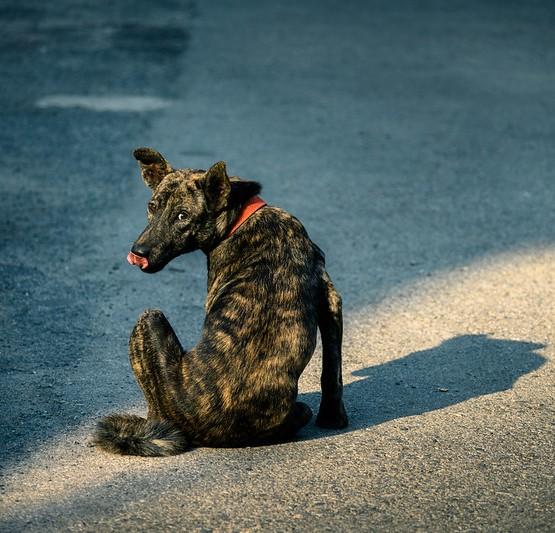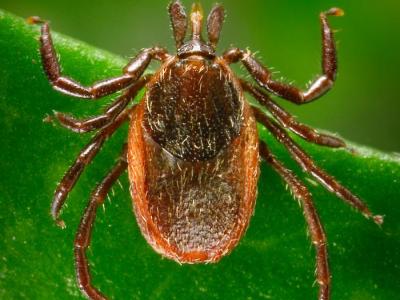As the world is dealing with a pandemic caused by one novel coronavirus that likely jumped from animals, researchers have identified another novel coronavirus from a child with pneumonia in Sarawak, Malaysia, in 2017-18, reports a study today in Clinical Infectious Diseases.
Dubbed CCoV-HuPn-2018, this new virus is the first canine coronavirus (CCoV) to ever be isolated from a human.
If CCoV-HuPn-2018 is confirmed as a pathogen, it would be the eighth known coronavirus to cause infection in humans.
Shared traits with other coronaviruses
Lead study author Anastasia Vlasova, DVM, PhD, of The Ohio State University, and her team used reverse transcription-polymerase chain reaction (RT-PCR) assays, cultured the virus in A72 canine cells, and pieced together the genome using the Sanger method. The article highlights their in-depth findings, but here are a few items of note:
First, the virus is a novel canine-feline recombinant alphacoronavirus, and it shares multiple genomic traits with the widespread CCoV-II. (SARS-CoV-2, the virus that causes COVID-19, is a betacoronavirus.)
Second, the N protein of CCoV-HuPn-2018 has a deleted portion, a mutation that has been seen only in the SARS-CoV human—but not bat—strains. (SARS-CoV causes SARS, or severe acute respiratory disease, which caused more than 8,000 human cases in 2003.)
Third, no mutations were found in the spike protein, which Vlasova says could indicate that certain strains of CCoV could already potentially infect humans.
Animal-human connections
"We don't want to actually cause alarm, to say that this is another coronavirus and will give us a problem," clarifies study author Teck-Hock Toh, MD, pediatrician, head of clinical research at the Sarawak hospital from which the sample came.
"But ... I think we actually need to look into these animal-human interactions—where these viruses come from, how they perform, what kinds of problems they give us. We need to know more about them before they actually give the big problem to us."
While the new coronavirus most likely has a canine host, both the authors and EcoHealth alliance President Peter Daszak, PhD, who was not involved in the study, say that this finding doesn't mean people have to be wary of dogs.
"What this paper tells us is that out there in the world, viruses are spilling over in human populations all the time," Daszak says. "This paper should not be interpreted as we should all be extra careful around our pets. To my mind, it means we need to make sure our health systems are getting ready to find any new events like this. The chances are that the next infectious disease is going to come from wildlife, not necessarily pet animals."
Eight pneumonia patients, all recovered
The virus was originally found during the trial of a new, semi-nested conventional reverse-transcription polymerase chain reaction (RT-PCR) test last year.
One of the authors on the Clinical Infectious Diseases study, Gregory Gray, MD, MPH, infectious disease epidemiologist at Duke University, had asked visiting doctoral candidate Leshan Xiu to create a diagnostics test that, instead of having high sensitivity and specificity to one coronavirus type, would be able to flag novel coronaviruses. The pneumonia samples from Sarawak were just some of the archived samples used to evaluate it.
After the discovery of CCoV presence, Gray worked with Toh to coordinate more archived samples from two Sarawak hospitals. Of the 301 nasopharyngeal swabs from 2017-18 pneumonia patients, 8, including the original (2.7%), were confirmed to contain CCoV.
Seven of the eight patients were less than 5 years old, and most were from the region's indigenous ethnic groups and lived in rural or suburban longhouses or villages where Toh says living with animals is a part of life. Viral co-infections were probable in seven of the patients, and all had negative bacterial blood cultures. After 4 to 6 days of hospitalization, all patients recovered, according to the study.
Gray says, "We've got to go do additional studies to understand the epidemiology to look for more evidence that this is truly a pathogen that causes pneumonia. We need to understand things like, does it go from animal to animal, animal to human, human to human? We don't know."
"Those associations such as certain mutations or deletions, how it will manifest—typically for that, we need to do much more research to find out," Vlasova adds. "For example, with this [N protein] deletion, we know it was found in some SARS-CoV isolates, but we don't know what exactly the mechanism behind it is or what biological function it contributes to."
Toh, Gray, and Vlasova will continue to keep an eye out for this novel virus and others in Malaysia as well as other high-risk areas like China and Vietnam. For CCoV-HuPn-2018 specifically, Toh is working on a study that involves collecting convalescent serum from patients to help build evidence around past exposure possibilities, and Vlasova will be working on a serologic test.
Daszak commends the team for its cross-borders collaboration. "Right now, international collaboration around pandemics is under threat from politics, from conspiracies, and just a general feeling that we should focus more inwardly on our countries. Viruses don't bother with that," he says.
Surveillance, prevention key
The idea of another zoonotic coronavirus isn't that surprising to the study authors or other experts. Respiratory coronaviruses have proven to be easily transmitted, deadly, or both. Besides the COVID-19 pandemic and the SARS 2003 epidemic, Middle East respiratory syndrome coronavirus (MERS-CoV) also infects people. It primarily comes from camels, and Daszak says that some studies trace coronavirus-caused colds centuries back to bats.
Because of these virus spillovers, Gray, Toh, and Vlasova continue to advocate for a focus on human-animal nexus surveillance. As Gray and co-author Anfal Abdelgadir, BDS, MSc, write in a 2021 Open Forum Infectious Diseases commentary, more human-animal interaction inevitably creates opportunities for novel strains, but it can take years of evolution and ineffective spillovers for these pathogens to become infectious and transmissible among humans.
"The most strategic approach would be directing periodic, novel respiratory virus surveillance at the human-animal interface, studying both animal workers and their animals," they write, advocating for a One Health approach, which looks at the holistic and interconnected relationships between all organisms' health and is being highlighted today by the World Health Organization.
"Surveillance for novel respiratory viruses among human pneumonia patients should be conducted in geographical areas known to be at high risk of novel respiratory virus emergence," they add.
Public health experts know another pandemic is in the future; the key is preparation. Daszak compares it to hurricanes. In extreme weather events, people use science to build systems to monitor and forecast potential dangers. If a hurricane is coming, evacuating people as a worthwhile precaution. Yet, when it comes to viruses, the world is preparing so much less, Daszak says.
"To drive it home, we miss 50% of estimated Ebola spillover events. We know the virus is probably carried by bats and that it gets into other species like primates in Africa, but 50% of spillover events are missed. In terms of high risk, we know that's an extremely lethal group of viruses, and we don't catch all the events," he says.
"The big message here is prevention instead of waiting for things to emerge," Daszak concludes, adding that not every spillover will involve patients who seek hospital care. "We can make sure the vaccines and drugs we design for COVID can also prevent that [next novel] virus from infecting people. We can have a real significant form of prevention measures if we spot these early events."





















